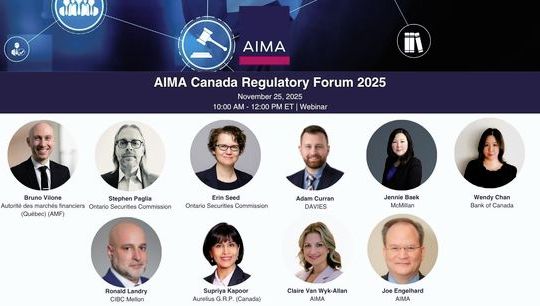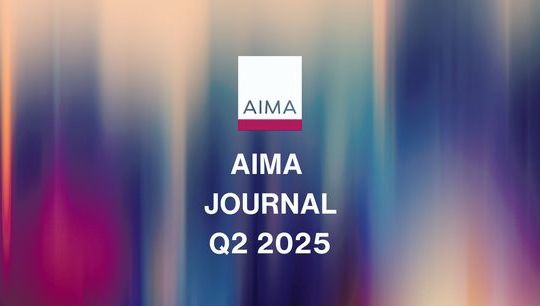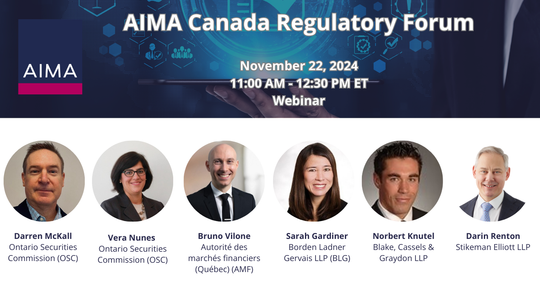Salaried member case digest: A positive result for the industry but by no means the end of the story
By Michael Beart; Francis Fitzpatrick KC , Larkstoke Advisors
Published: 20 September 2022
The first case relating to the UK’s salaried member rules (ITTOIA 2005 s.863A-863G) was released on 29 June 2022, reference TC/2019/09328. It represents the opening test of the legislation in the UK courts and will have important implications for UK asset managers structured as a limited liability partnership (LLP). Similar to the mixed membership rules that were introduced alongside the salaried member rules in 2014, the first case relates to an alternative investment manager, demonstrating HMRC’s continued focus on the industry.
Legislation
The salaried member rules operate by recharacterising a member of an LLP as an employee for UK tax purposes, where three conditions (A to C) are met:
- Condition A – The individual is reasonably expected to receive remuneration that is at least 80% “disguised salary”
- Condition B – The individual does not have significant influence over the affairs of the partnership as a whole
- Condition C – The individual does not have capital >25% of their disguised salary.
If all three conditions are met then the partner will be classed as an employee imposing PAYE obligations on compensation, including the requirement for the LLP to pay the employer’s NIC at a rate of 13.8% (15.05% from April 2022). The rules are intended to apply to those members of LLPs who are more like employees than partners in a traditional partnership.
Background
The appellant in the case is one of Europe’s best-known alternative asset managers. Since 2009 it has adopted an LLP structure through which to operate its UK investment management functions, and notably decided to close its funds to outside investors in 2015. The case covers five tax years from 2014/15 to 2018/19, over which time approximately one-third of the appellant’s workforce in the UK were partners in an LLP, split between three broad categories:
- 1/5 infrastructure members, which included an executive committee (ExCo)
- 3/5 portfolio managers / discretionary traders (collectively the ‘PMs’)
- 1/5 of other front office members
The compensation of individual partners is comprised of three main components: priority distributions, discretionary allocations, and income point allocations.
HMRC’s view was that only the original four partners on the ExCo should be classified as partners for tax purposes (based on the fact that they had significant influence, therefore, failing Condition B), but all the other individual partners met all three conditions. The appellant appealed, asking that the First Tier Tax Tribunal (FTT) consider both Conditions A and B for the remaining partners (noting that it was common ground that the application of Condition C was not in question).
Condition A
The case focused on discretionary allocations. These were decided by a global remuneration committee, which was expected to work out the anticipated accounting profit and then reward members on the basis of their individual performance. For PMs, this was determined by a percentage of the profit made on capital allocations. This was a process of judgment rather than the application of a formula and an individual’s profits could increase even though the overall profits of the LLP might reduce.
HMRC submitted that the discretionary allocations were not a share of overall profits and the imposition of a cap, by reference to the profits of the LLP, was not sufficient to establish that the allocations were variable by reference to the profits of the LLP. Whilst there was a clear link to the individual performance of the member, there was no clear link to the profits of the LLP.
The appellant submitted that the amounts were variable by reference to the overall profits of the partnership, and in particular the absence of profits or the presence of a loss, as if the profits were insufficient, then the discretionary allocations were abated or reduced to nil. Even though each partner was ‘siloed’ in that each partner was rewarded for their performance, poor performance from other partners could affect the overall profitability of the LLP and so could affect the amount awarded to each ‘siloed’ partner. Furthermore, the appellant submitted that there was no need for the discretionary allocations to track the profits of the LLP from year to year, it was sufficient that the amount was affected by the profitability of the LLP.
The learned Judge agreed with the appellant that there was no need for the discretionary allocations of an individual to track the level of profits of the partnership, hence an individual’s allocation could go up even if the firm’s profits decreased and vice versa. However, he did not agree that it was sufficient to establish the requisite link that if there were fewer profits available, the quantum of the allocations might abate. Rather, he decided that the element of variation derived not from the profits of the LLP, but rather from the performance of the individuals.
In terms of a literal interpretation of the legislation, this is a surprising decision, as the discretionary allocations were clearly variable by reference to the overall amount of the profits or losses of the LLP. If those overall profits were reduced, then the amount varied. The learned Judge seems to have adopted a highly purposive interpretation based on his view that the purpose of the salaried member rules was to treat as outside the rules, only those who were closely akin to the members of a traditional partnership. This purposive approach worked against the appellant on Condition A but worked in their favour on Condition B.
Condition B
HMRC submitted that the question of significant influence was to be resolved by looking to see who, having regard to the mutual rights and duties of the LLP and its members, wielded ‘managerial clout’. This was directed at what might be described as the constitutional aspects of the various relationships, and other aspects, such as the amount of capital allocations under a PM’s discretion were irrelevant.
The appellant submitted that to breach Condition B an individual member did not have to wield significant influence over all the affairs of the partnership, but rather it could relate to just one aspect of the partnership, such as investment activity or back-office activity. Particularly in the case of PMs, an individual partner with a capital allocation of US$100 million or above would wield such influence.
The learned Judge, who referred to his own experience of being a member of a law firm, accepted the appellant’s analysis. He saw no justification in limiting significant influence to managerial influence. He saw the broad purpose of this rule as being to distinguish between members playing the role of a partner in a traditional partnership and those who are playing the role of employees. In a memorable phrase, he said the role of a partner was to “find, mind and grind”, so get the work, supervise the work and undertake the work. The concept of ‘significant influence’ went well beyond managerial influence and into other aspects of a partner’s activities in a traditional partnership. He also accepted that influence in this sense could also be just over one aspect of the LLP’s business. His view was the evidence showed the PMs (with a capital allocation of $100m or more) took key investment decisions on a daily basis and could, both as a class and as individuals, potentially exercise influence over the LLP by reason of this investment activity.
However, (with the exception of the original four members of the ExCo) he did not come to the same conclusion for the infrastructure or other front office members, admitting that evidentially he was struggling to understand precisely what these individuals actually did in the context of the partnership. The lack of evidence and/or familiarity with the inner workings of an asset manager appears to have led to this decision, suggesting there is ample scope for the point to be revisited.
Again, given the wording of the legislation, which does seem directed at constitutional power rather than economic influence or involvement in the business of the partnership, the learned Judge appears to have adopted a strongly purposive interpretation. The counter-argument to this rather broad approach is that parliament in providing the test at Conditions A-C has directed how the legislation is to apply with some considerable degree of precision and so those rules should be applied according to their terms.
Impact on asset managers
Single-strategy asset managers (or those with a single profit pool to share) have historically been able to rely more heavily on Condition A being breached, and the decision in the case is unlikely to change this position. Additionally, it is likely to build confidence in those managers around also breaching Condition B for certain members, also perhaps hoping to apply some of the principles established in the case beyond PMs. Likewise, multi-strategy managers will welcome the finding on Condition B but are likely to be disappointed with the decision on Condition A.
Nonetheless, there seems little doubt that the decision will be appealed, and so further guidance can be expected from the courts as the case works its way through the appeals process. In short, whilst the outcome is positive in some aspects, it is perhaps just the latest chapter in an increasingly long and frustrating story.
Caution should be observed in reading too much into the conclusions thus far, particularly as FTT decisions are only binding on the parties in a particular case. Interpretation of the rules needs to be considered on a case-by-case basis and decisions are fact specific. A high degree of uncertainty around the application of the legislation still exists, however, what is clear is HMRC’s willingness to litigate and its continued focus on the industry. Best practice for taxpayers is to evidence compliance annually and reassess the rules for each partner at the beginning of the tax year, or more regularly if required (e.g. new launches, joiners, leavers, etc.). Contemporaneous documentation is extremely valuable and should be maintained. Now is clearly a good time for asset managers to both review their position and the evidence supporting it.







